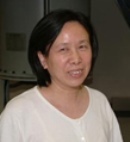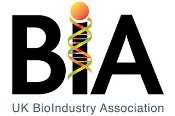Theme: “Recent Advancement and Discoveries in Synthetic Biologyâ€
Synthetic Biology-2015

We welcome you to the International Conference on Synthetic Biology popularly known as Synthetic Biology 2015, which is going to be held during September 28-30, 2015 Houston, USA. The theme of the conference "Recent Advancement and Discoveries in Synthetic Biology" is all about increased genome sequencing efforts have ushered in a new era of systems biology, in which entire cellular networks are analyzed and optimized for application in the development of strains and Bioprocesses. The properties of these complex cellular networks cannot be understood by monitoring individual components alone, but from the integration of non-linear gene, protein, and metabolite interactions across multiple metabolic and regulatory networks via computer simulation.
Â
"Synthetic biology is an emerging area of research that can broadly be described as the design and construction of novel artificial biological pathways, organisms or devices, or the redesign of existing natural biological systems."
Â
The demand for synthetic biology is likely to increase owing to the increasing R&D expenditure in pharmaceutical and biotechnology companies, growing demand for synthetic genes, rising production of genetically modified crops, and incessantly rising funding in the field of synthetic biology. Furthermore, rising concerns over fuel consumption and increasing demand for protein therapeutics are likely to create opportunities for the synthetic biology market. However, standardization and integration of biological parts at system-level still remains a challenge for the market. Synthetic Biology mainly focusses on the Universities, Institutes and major Societies along with the latest trends in the market of Synthetic Biology.
Â
 The global synthetic biology market for the forecast period of 2013 to 2018.This market is expected to reach $5,630.4 million by 2018 from $1,923.1 million in 2013, growing at a CAGR of 24% during the forecast period. The global synthetic biology market is segmented on the basis of tools, technologies, applications, and geographies.
Â
Several American associations like The Biochemical Society, Pharmaceutical Research and Manufacturers of America, Society of Cell Biology International Union of Biochemistry and Molecular Biology, International Society for Computational Biology, International Federation of Human Genetics Societies, International Society for Clinical Biostatistics, IEEE - (Computational Intelligence Society, Bioinformatics and Bioengineering Technical Committee), Genetics Society of America, Ecological Society of America, Clinical Immunology Society, Association of Science - Technology Centers, American Society for Microbiology, American Society of Exercise Physiologists, American Society of Human Genetics, American Institute of Biological Sciences, American Society of Limnology and Oceanography, American Association of Pharmaceutical Scientists, American Society of Plant Biologists have been focusing on Synthetic Biotech research.
Â
OMICS International Organises 300+ Conferences Every Year across USA, Europe & Asia with support from 1000 more scientific societies and Publishes 400+ Open access journals which contains over 30000 eminent personalities, reputed scientists as editorial board members.
Â
 The scientific program paves a way to gather visionaries through the research talks and presentations and put forward many thought provoking information. It mainly emphasizes on the topics Synthetic Genomics, Design and construction of Synthetic Gene Networks, Molecular Modeling and Drug Designing, Genome Design and Construction, Recombinant-DNA technology, Protein Engineering Design and Selection, Biosensors, DNA Sequencing, Computational Biology, Biotechnology and Bioprocess Engineering, Industrial Biotechnology, Cell and Tissue Engineering, Evolutionary Biology related with Synthetic Biology and it is provided scientists with the ability to design and build synthetic networks at the level of transcription, translation, and signal transduction, by manipulating and stringing together modular biological components such as promoters, repressors, and RNA translational control devices.
Â
Synthetic Biology:Â Is designed to meet all renowned and eminent speakers from all around the globe with delegates, exhibitors, industry experts and work shop symposiums.
For more information:Â conference series.com
Track: 1Â Synthetic Genomics
Synthetic genomics is a nascent field of synthetic biology that uses aspects of genetic modification on pre-existing life forms with the intent of producing some product or desired behavior on the part of the life form so created.
Synthetic genomics combines methods for the artificial synthesis of DNA with computational techniques to design it. These methods allow scientists and engineers to construct genetic material that would be impossible or impractical to produce using more conventional biotechnological approaches. For example, using synthetic genomics it is possible to design and assemble chromosomes, genes and gene pathways, and even whole genomes.
The development of synthetic genomics is related to certain recent technical abilities and technologies in the field of genetics. The ability to construct long base pair chains cheaply and accurately on a large scale has allowed researchers to perform experiments on genomes that do not exist in nature. Coupled with the developments in protein folding models and decreasing computational costs the field synthetic genomics is beginning to enter a productive stage of vitality.
Synthetic Biology Summit:Â Is designed to meet all renowned and eminent speakers from all around the globe with delegates, exhibitors, industry experts and work shop symposiums.
For more information:Â conference series.com
The development of synthetic genomics has made tremendous efforts in study of Synthetic genetically pathways especially for Synthetic genomics Vaccines designing. Engineering of unnatural nucleotide and amino acids that made a great job for designing of required protein. BioBrick parts are DNA sequences which conform to a restriction-enzyme assembly standard. Metagenomics is the study of genetic material recovered directly from environmental samples.
The global synthetic Genomics market is segmented on the basis of tools, technologies, applications, and regions. Based on tools, the synthetic biology market is categorized into Xeno-nucleic acids, chassis organisms, oligonucleotides, enzymes, and cloning and assembly kits. The global synthetic biology market is expected to reach $5,630.4 million in 2018 from $1,923.1 million in 2013, growing at a CAGR of 24%. The market is dominated by North America, followed by Europe, Asia, and Rest of the World.
Â
Track: 2Â Design and construction of Synthetic Gene Networks
Design and construction of Synthetic gene networks from modular components is a major goal of synthetic biology. However, the construction of gene networks with predictable functions remains hampered by a lack of suitable components and the fact that assembled networks often require extensive, iterative retrofitting to work as intended.
Advances in the development of molecular tools for the inducible control of transcription, translation, and protein degradation are the basis for the rapidly emerging design and construction of synthetic gene networks in mammalian cells.
However, advances in synthetic biology have been limited by a lack of interoperable parts, techniques for dynamically probing biological systems and frameworks for the reliable construction and operation of complex, higher-order networks. As these challenges are addressed, synthetic biologists will be able to construct useful next-generation synthetic gene networks with real-world applications in medicine, biotechnology, bioremediation and bioenergy. Artificial gene synthesis is a method in synthetic biology that is used to create artificial genes in the laboratories.
 “Synthetic Gene Networks Market, Global Industry Analysis, Size, Growth, Share and Forecast, 2012 - 2018", global Synthetic biology market was worth USD 1,537.5 million in 2011. The market grew to a value of USD 2,120 million in 2012, and is expected to reach USD 16,745 million by 2018, growing at a CAGR of 41.1% from 2010 to 2018.
Synthetic Biology meetings:Â Is designed to meet all renowned and eminent speakers from all around the globe with delegates, exhibitors, industry experts and work shop symposiums.
For more information:Â conference series.com
Â
Track 3:Â Molecular Modeling and Drug Designing
Molecular modeling has become a valuable and essential tool to medicinal chemists in the molecular drug design process. Molecular modeling describes the generation, manipulation or representation of three-dimensional structures of molecules and associated physico-chemical properties. It involves a range of computerized techniques based on theoretical chemistry methods and experimental data to predict molecular and biological properties. Depending on the context and the rigor, the subject is often referred to as 'molecular graphics', 'molecular visualizations', 'computational chemistry', or 'computational quantum chemistry'
The development of new drugs with potential therapeutic applications is one of the most complex and difficult process in the pharmaceutical industry. Millions of dollars and man-hours are devoted to the discovery of new therapeutically agents. As, the activity of a drug is the result of a multitude of factors such as bioavailability, toxicity and metabolism, ratio-nal drug design has been utopias for centuries. Very recently, impressive technological advances in areas such as structural based drug design of bio-macromolecules, computer aided drugs design, molecular biology have made rational drug design, Bioinformatics for designing and feasible.
The global genome editing market is expected to reach $3,514.08 Million by 2019 from $1,845.25 Million in 2014, at a CAGR of 13.75% between 2014 and 2019. Factors such as rapid increase in the number of pharmaceutical and biotechnology industries, strong trend of R&D in life science research, increasing government funding for genomics, technological advancements, increased demand for synthetic genes, and the overall rise in the production of genetically modified crops are driving the growth of the genome engineering market. On the other hand, stringent regulatory policies and ethical issues are major factors restraining the growth of this market. The global bioinformatics market accounted for $4.2 billion in 2014 and is poised to reach $13.3 billion by 2020 at a CAGR of 20.9% from 2015 to 2020. The bioinformatics platforms product segment is expected to witness the fastest growth during the forecast period.
Synthetic Biology events:Â Is designed to meet all renowned and eminent speakers from all around the globe with delegates, exhibitors, industry experts and work shop symposiums.
For more information:Â conference series.com
Â
Track 4:Â Genome Design and Next-generation genomic technologies
Synthetic biology requires both engineering efficiency, compliance with safety guidelines and ethics. Focusing on the rational construction of biological systems based on engineering principles, synthetic biology depends on a genome-design platform to explore the combinations of multiple biological components or BIO bricks for quickly producing innovative devices. The detailed platform adopts a centralized evaluation model (CEM), computer-aided design (CAD) bricks, and a freemium model. It is also important for the platform to support the legal aspects of copyrights as well as patent and safety guidelines because intellectual work including DNA sequences designed rationally by human intelligence is basically copyrightable. An informational platform with high traceability, transparency, auditability, and security is required for copyright proof, safety compliance, and incentive management for open innovation in synthetic biology. GenoCon, which we have organized and explained here, is a competition-styled, open-innovation method involving worldwide participants from scientific, commercial, and educational communities that aims to improve the designs of genomic sequences that confer a desired function on an organism. Using only a Web browser, a participating contributor proposes a design expressed with CAD bricks that generate a relevant DNA sequence, which is then experimentally and intensively evaluated by the GenoCon organizers.
Synthetic biology is an emerging discipline for designing and synthesizing predictable, measurable, controllable, and transformable biological systems. These newly designed biological systems have great potential for the development of cheaper drugs, green fuels, biodegradable plastics, and targeted cancer therapies over the coming years. Fortunately, our ability to quickly and accurately engineer biological systems that behave predictably has been dramatically expanded by significant advances in DNA-sequencing, DNA-synthesis, and DNA-editing technologies.
The global genome editing market is expected to reach $3,514.08 Million by 2019 from $1,845.25 Million in 2014, at a CAGR of 13.75% between 2014 and 2019. Factors such as rapid increase in the number of pharmaceutical and biotechnology industries, strong trend of R&D in life science research, increasing government funding for genomics, technological advancements, increased demand for synthetic genes, and the overall rise in the production of genetically modified crops are driving the growth of the genome engineering market. On the other hand, stringent regulatory policies and ethical issues are major factors restraining the growth of this market.
The Asian regional segment, on the other hand, is expected to register a double-digit growth rate from 2014 to 2019, owing to the expansion of leading genome editing companies and increased R&D spending. R&D spending in Asia increased from $158.94 billion in 2001 to $329.31 billion in 2010, at a CAGR of 8.43%. The R&D spending in Asia accounted for 27.13% of the global R&D expenditure in 2010.
Synthetic biology conferences:Â Is designed to meet all renowned and eminent speakers from all around the globe with delegates, exhibitors, industry experts and work shop symposiums.
For more information:Â conference series.com
Â
Track 5:Â Development of Recombinant-DNA technology
Recombinant DNA (rDNA)Â molecules are DNA molecules formed by laboratory methods of genetic recombination to bring together genetic material from multiple sources, creating sequences that would not otherwise be found in biological organisms. Recombinant DNA is possible because DNA molecules from all organisms share the same chemical structure.
Recombinant DNA is widely used in biotechnology, medicine and research. Today, recombinant proteins and other products that result from the use of rDNA technology are found in essentially every western pharmacy, doctor's or veterinarian's office, medical testing laboratory, and biological research laboratory. In addition, organisms that have been manipulated using recombinant DNA technology, as well as products derived from those organisms, have found their way into many farms, supermarkets, home medicine cabinets, and even pet shops, such as those that sell GloFish and other genetically modified animals.
The global epigenetics market was valued at $413.24 million in 2014 and is poised to grow at a CAGR of 13.64% between 2014 and 2019, to reach $783.17 million in 2019.The increasing prevalence of cancer and increased funding for research, along with growing partnerships between biotechnology and pharmaceutical companies for the development of epigenetics-based products will be the most important growth drivers for this market in the forecast period from 2014 to 2019. The next generation biometrics market is expected to reach $24.4 Billion by 2020, at a CAGR of 17.9% between 2015 and 2020. Travel & immigration is the leading application for the next generation biometrics market.
Â
Track 7:Â Advanced DNA Sequencing
DNA sequencing is the process of determining the precise order of nucleotides within a DNA molecule. The advent of rapid DNA sequencing methods has greatly accelerated biological and medical research and discovery. Knowledge of DNA sequences has become indispensable for basic biological research, and in numerous applied fields such as medical diagnosis, biotechnology, forensic biology, virology and biological systematics.
The application of next-generation DNA sequencing technologies highlight the striking impact of these massively parallel platforms on genetics. These new methods have expanded previously focused readouts from a variety of DNA preparation protocols to a genome-wide scale and have fine-tuned their resolution to single base precision. The sequencing of RNA also has transitioned and now includes full-length cDNA analyses, serial analysis of gene expression (SAGE)-based methods, and noncoding RNA discovery. Next-generation sequencing has also enabled novel applications such as the sequencing of ancient DNA samples, and has substantially widened the scope of metagenomic analysis of environmentally derived samples. Taken together, an astounding potential exists for these technologies to bring enormous change in genetic and biological research and to enhance our fundamental biological knowledge.
Current market is mostly for research applications and future markets will be other applications related to healthcare. The value of DNA sequencer market in 2014 is described with estimates for 2019 and 2024. DNA sequencing industry is segmented into instruments and consumables, services, and workflow products. Instruments and consumables segment are the rapidly emerging segments accounting for about $2.2 billion by the year 2016. Services segment is expected to grow significantly and reach market value of $3.5 billion with CAGR of 29% over the year 2016. The workflow segment will reach $883.6 million at CAGR of 16.6% by 2016.
The next generation sequencing market is rapidly evolving with a large number of developments taking place to increase accuracy and speed, and reduce costs of sequencing. It is the fastest-growing and most lucrative segment in the genomics space with an estimated growth of 23.1%. The global NGS market will be worth $2.5 billion in 2014 and is poised to reach $8.7 billion by 2020.
Â
Track 8:Â Computational Biology
Computational biology involves the development and application of data-analytical and theoretical methods, mathematical modeling and computational simulation techniques to the study of biological, behavioral, and social systems. The field is broadly defined and includes foundations in computer science, applied mathematics, animation, statistics, biochemistry, chemistry, biophysics, molecular biology, genetics, genomics, ecology, evolution, anatomy, neuroscience, and visualization.
Computational biology is different from biological computation, which is a subfield of computer science and computer engineering using bioengineering and biology to build computers, but is similar to bioinformatics, which is an interdisciplinary science using computers to store and process biological data.
Computational genomics is a field within genomics which studies the genomes of cells and organisms. It is often referred to as Computational and Statistical Genetics. Computational neuroscience is the study of brain function in terms of the information processing properties of the structures that make up the nervous system. It is a subset of the field of neuroscience, and looks to analyze brain data to create practical applications.
The study of the effects of genomic data to find links between specific genotypes and diseases and then screening drug data. The pharmaceutical industry requires a shift in methods to analyze drug data. Cancer computational biology is a field that aims to determine the future mutations in cancer through an algorithmic approach to analyzing data.
Computational Biology Market - Global Industry Analysis, Size, Share, Growth, Trends and Forecast, 2012 - 2018," the global computational biology market was valued at $760 million in 2011. It is further predicted to rise at a CAGR of 21.3% from 2012 to 2018 and reach an estimated value of $2,937.3 million by 2018.
Â
Track 9:Â Biotechnology and Bioprocess Engineering
Engineers view biology as a technology – the systems biotechnology or systems biological engineering. Synthetic Biology includes the broad redefinition and expansion of biotechnology, with the ultimate goals of being able to design and build engineered biological systems that process information, manipulate chemicals, fabricate materials and structures, produce energy, provide food, and maintain and enhance human health (see Biomedical Engineering) and our environment.
Studies in synthetic biology can be subdivided into broad classifications according to the approach they take to the problem at hand: standardization of biological parts, biomolecular engineering, genome engineering. Biomolecular engineering includes approaches which aim to create a toolkit of functional units that can be introduced to present new orthogonal functions in living cells. Genetic engineering includes approaches to construct synthetic chromosomes for whole or minimal organisms. Biomolecular design refers to the general idea of the de novo design and combination of biomolecular components. The task of each of these approaches is similar: To create a more synthetic entry at a higher level of complexity by manipulating a part of the preceding level.
"Biotechnology Market by Application (Biopharmacy, Bioservices, Bioagri, Bioindustrial), by Technology (Fermentation, Tissue Regeneration, PCR, Nanobiotechnology, DNA Sequencing & Others) - Global Industry Analysis, Size, Share, Growth, Trends and Forecast, 2010 - 2017" to its datastore. The report states that the global market for biotechnology, studied according to its application areas, shall grow at an average annual growth rate of CAGR 11.6% from 2012 to 2017 and reach a value worth USD 414.5 billion by the end of 2017. This market was valued approximately USD 216.5 billion in 2011.
Â
Track 10:Â Industrial Biotechnology
Industrial biotechnology is one of the most promising new approaches to pollution prevention, resource conservation, and cost reduction. It is often referred to as the third wave in biotechnology. If developed to its full potential, industrial biotechnology may have a larger impact on the world than health care and agricultural biotechnology. It offers businesses a way to reduce costs and create new markets while protecting the environment. Also, since many of its products do not require the lengthy review times that drug products must undergo, it's a quicker, easier pathway to the market.
The application of biotechnology to industrial processes is not only transforming how we manufacture products but is also providing us with new products that could not even be imagined a few years ago. Because industrial biotechnology is so new, its benefits are still not well known or understood by industry, policymakers, or consumers.
The global biotechnology industry had total revenues of $323.1bn in 2014, representing a compound annual growth rate (CAGR) of 7.2% between 2010 and 2014.
The medical/healthcare segment was the industry's most lucrative in 2012, with total revenues of $182.5bn, equivalent to 60.0% of the industry's overall value.
The performance of the industry is forecast to decelerate, with an anticipated CAGR of 5.7% for the five-year period 2014 - 2019, which is expected to drive the industry to a value of $427.3bn by the end of 2019.
Â
Track 11:Â Animal Cell and Tissue Engineering
Synthetic polymers focusing on their potential in tissue engineering applications. The major classes of polymers are briefly discussed with regard to synthesis, properties and biodegradability, and known degradation modes and products are indicated based on studies reported in the literature. A vast majority of biodegradable polymers studied belongs to the polyester family, which includes polyglycolides and polylactides. Some disadvantages of these polymers in tissue engineering applications are their poor biocompatibility, release of acidic degradation products, poor processability and loss of mechanical properties very early during degradation. Other degradable polymers such as polyorthoesters, polyanhydrides, polyphosphazenes, and polyurethanes are also discussed and their advantages and disadvantages summarized. With advancements in tissue engineering it has become necessary to develop polymers that meet more demanding requirements.
The cell line development market, by type of cell lines is segmented into primary cell lines, continuous cell lines, hybridomas, and recombinant cell lines. On the basis of source, the market is segmented into mammalians, insects, and amphibians. On the basis of applications, the market is segmented into bio-production, tissue engineering and regenerative medicine, toxicity testing, research, and drug discovery. It has playing major applications such as Bio-production, Diagnostics, Vaccines, Recombinant Protein Therapeutics, Tissue Engineering & Regenerative Medicines, Toxicity Testing Research and Drug Discovery.
Â
Track 12:Â Evolutionary Biology
Evolutionary genetics and genomics involve study of the evolution of genes, gene families, genetic systems, genomes, and populations and the genetic basis of phenotypic evolution. The approaches include the use of genetic markers in natural populations, computer simulations and experiments with model organisms.
Evolutionary research try to explain phenomena that were poorly accounted for by the work of the modern evolutionary synthesis. These phenomena include speciation, the evolution of sexual reproduction, the evolution of cooperation, the evolution of ageing, and evolvability. The modern evolutionary synthesis was devised at a time when nobody understood the molecular basis of genes. Today, evolutionary biologists try to determine the genetic architecture of interesting evolutionary phenomena such as adaptation and speciation. They seek answers to questions such as how many genes are involved, how large are the effects of each gene, to what extent are the effects of different genes interdependent, what sort of function do the genes involved tend to have, and what sort of changes tend to happen to them (e.g., point mutations vs. gene duplication or even genome duplication). Evolutionary biologists try to reconcile the high heritability seen in twin studies with the difficulty in finding which genes are responsible for this heritability using genome-wide association studies.
One challenge in studying genetic architecture is that the classical population genetics that catalyzed the modern evolutionary synthesis must be updated to take into account modern molecular knowledge. This requires a great deal of mathematical development to relate DNA sequence data to evolutionary theory as part of a theory of molecular evolution. For example, biologists try to infer which genes have been under strong selection by detecting selective sweeps.
Â
Track 13:Â Novel materials and Biosensors
A biosensor is an analytical device, used for the detection of an analyte, that combines a biological component with a physicochemical detector.
The sensitive biological element (e.g. tissue, microorganisms, organelles, cell receptors, enzymes, antibodies, nucleic acids, etc.), a biologically derived material or biomimetic component that interacts (binds or recognizes) the analyte under study. The biologically sensitive elements can also be created by biological engineering.
The transducer or the detector element (works in a physicochemical way; optical, piezoelectric, electrochemical, etc.) that transforms the signal resulting from the interaction of the analyte with the biological element into another signal (i.e., transduces) that can be more easily measured and quantified;
Biosensor reader device with the associated electronics or signal processors that are primarily responsible for the display of the results in a user-friendly way. This sometimes accounts for the most expensive part of the sensor device, however it is possible to generate a user friendly display that includes transducer and sensitive element(see Holographic Sensor). The readers are usually custom-designed and manufactured to suit the different working principles of biosensors.
The biosensor is a sensing device, which consists of a combination of a specific biological element and a transducer. This market is expected to witness a prominent growth over the coming years. Driven by the need for better methods for environmental monitoring and rapid pathogen detection, the biosensors industry has also been expanding to encompass non-clinical applications such as biodefense, environmental surveillance, and food industry. The total market was valued at $11.39 Billion in 2013 and is expected to reach $22.68 Billion by 2020, at an estimated CAGR of 10.00% from 2014 to 2020.
Â
Track 14:Â Synthetic Biology Trends in Oncology
Gene therapy as a modality in the treatment of diseases other than genetically inherited, monogenic disorders has taken root. This is particularly obvious in the field of oncology. summarize some of the exciting progress that has recently been made with respect to both targeting the delivery of potentially therapeutic genes to tumor sites and regulating their expression within the tumor microenvironment. In order to specifically target malignant cells while at the same time sparing normal tissue, cancer gene therapy will need to combine highly selective gene delivery with highly specific gene expression, specific gene product activity, and, possibly, specific drug activation.
Gene therapy for the treatment of cancer was initiated with high levels of optimism and enthusiasm. Recently, this perception has had to be tempered by the realisation that efficiency and accuracy of gene delivery remain the most significant barriers to its success. So far, there has been a disappointing inability to reach target cells with sufficient efficacy to generate high enough levels of direct killing and this has necessitated the invocation of bystander effects in order for any potential strategy to be convincing.
The global oncology drugs market is expected to reach at $111.9 billion by 2020. Patent expiration of key cancer drugs such as Herceptin, Erbitux, Rituxan and Avastin, is expected to boost the growth of cancer biosimilars market by 2020. Going further, the biological therapies are expected to dominate the market by 2020, due to their high efficacy, target specific action and less toxicity. Blood cancer drugs market was the largest revenue generating segment in 2013 owing to the high cost of drugs (immunotherapies) used for the treatment of blood cancer.
Â
Â
Â
Â
Synthetic Biology-2015 is a relatively new field in biomedical research. It focuses on engineering new or modified signaling proteins to create desired signaling pathways in the cell. Every living cell is an extremely complex machine expressing thousands of different proteins. Due to superb regulation, many cells, such as photoreceptors and other neurons in vertebrates, can live for decades. Cells can also self-reproduce by division, where both daughter cells are perfectly viable. Natural selection (the “blind watchmaker”, to use Dawkins’ expression) spent hundreds of millions of year to achieve this perfection. Due to elucidation of the intricacies of cellular regulatory mechanisms we can now play evolution on our time scale: re-design proteins and signaling pathways to achieve our ends.
Scientifically, the success of these endeavors is the ultimate proof that we know enough about cellular signaling pathways to harness them for our purposes. From a practical standpoint, targeted regulation of cell signaling paves the way to real cures of many disorders, genetic and acquired, where before we could only manage the symptoms using small molecules.
Synthetic genomics is a nascent field of synthetic biology that uses aspects of genetic modification on pre-existing life forms with the intent of producing some product or desired behavior on the part of the life form so created.
Synthetic genomics combines methods for the artificial synthesis of DNA with computational techniques to design it. These methods allow scientists and engineers to construct genetic material that would be impossible or impractical to produce using more conventional biotechnological approaches. For example, using synthetic genomics it is possible to design and assemble chromosomes, genes and gene pathways, and even whole genomes.
Artificial and gene script synthetic is a method in synthetic biology that is used to create artificial genes in the laboratory. Currently based on solid-phase DNA synthesis, it differs from molecular cloning and polymerase chain reaction (PCR) in that the user does not have to begin with preexisting DNA sequences. Therefore, it is possible to make a completely synthetic double-stranded DNA molecule with no apparent limits on either nucleotide sequence or size. The method has been used to generate functional bacterial or yeast chromosomes containing approximately one million base pairs. Recent research also suggests the possibility of creating novel nucleobase pairs in addition to the two base pairs in nature, which could greatly expand the possibility of expanding the genetic code.
Gene therapy as a modality in the treatment of diseases other than genetically inherited, monogenic disorders has taken root. This is particularly obvious in the field of oncology. Summarize some of the exciting progress that has recently been made with respect to both targeting the delivery of potentially therapeutic genes to tumor sites and regulating their expression within the tumor microenvironment. In order to specifically target malignant cells while at the same time sparing normal tissue, cancer gene therapy will need to combine highly selective gene delivery with highly specific gene expression, specific gene product activity, and, possibly, specific drug activation.
“Synthetic Gene Networks Market, Global Industry Analysis, Size, Growth, Share and Forecast, 2012 - 2018", global Synthetic biology market was worth USD 1,537.5 million in 2011. The market grew to a value of USD 2,120 million in 2012, and is expected to reach USD 16,745 million by 2018, growing at a CAGR of 41.1% from 2010 to 2018.
Synthetic chemistry and biologists meetings will serve as an impulse for the advancement of molecular analysis by connecting scientists all across the world at conferences and exhibitions that would create an environment conducive for information exchange, generation of new ideas and acceleration of applications. Synthetic Biology Conference promises many bio-medical innovations, and has the potential to change the way treatments are discovered and used.
Conference Highlights
- Synthetic Genomics
- Design and construction of Synthetic Gene Networks
- Molecular Modeling and Drug Designing
- Genome Design and Next-generation genomic technologies
- Development of Recombinant-DNA technology
- Protein Engineering Design and Selection
- Advanced DNA Sequencing
- Computational Biology
- Biotechnology and Bioprocess Engineering
- Industrial Synthetic Biology
- Animal Cell and Tissue Engineering
- Evolutionary Biology
- Novel materials and Biosensors
- Synthetic Biology Trends in Oncology
To share your views and research, please click here to register for the Conference.
To Collaborate Scientific Professionals around the World
| Conference Date | September 28-29, 2015 | ||
| Sponsors & Exhibitors |
|
||
| Speaker Opportunity Closed | Day 1 | Day 2 | Day 3 |
| Poster Opportunity Closed | Click Here to View | ||
Useful Links
Special Issues
All accepted abstracts will be published in respective Our International Journals.
- Current Synthetic and System Biology-Open Access
- Journal of Bioengineering & Biomedical Science
- Molecular Cloning & Genetic Recombination:Si-Technol
Abstracts will be provided with Digital Object Identifier by

















